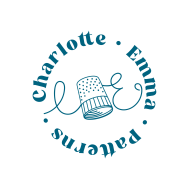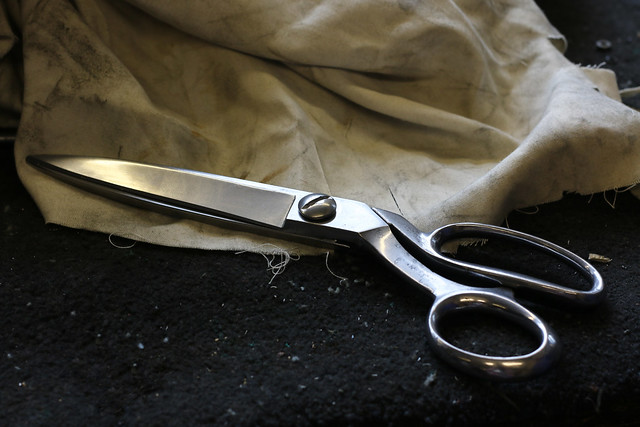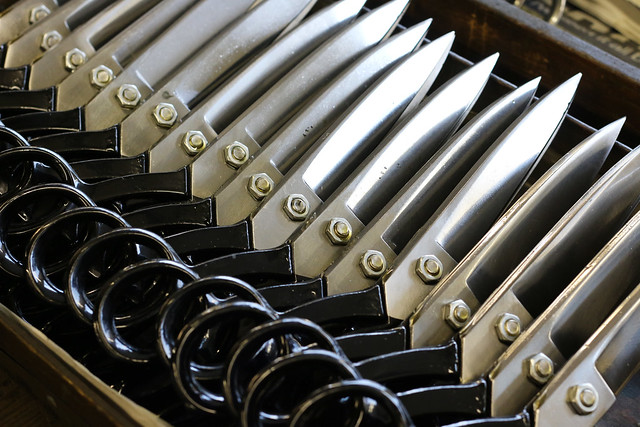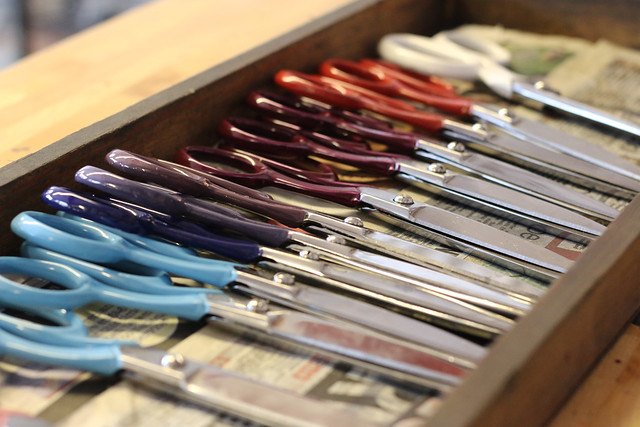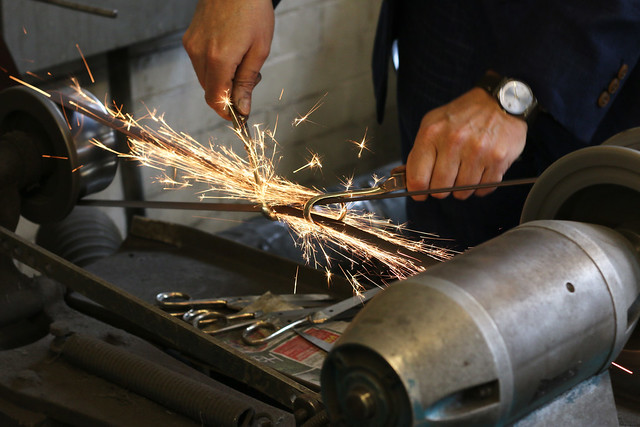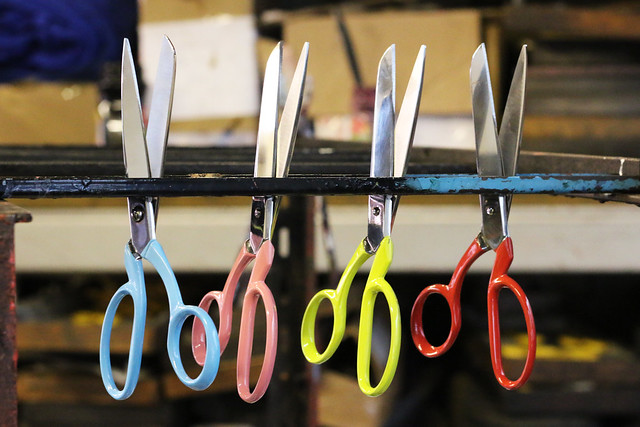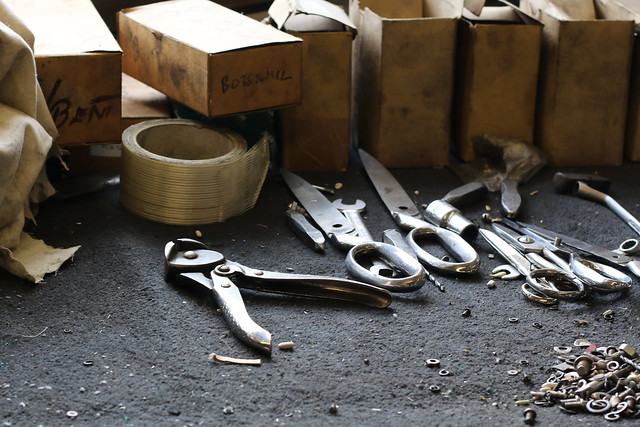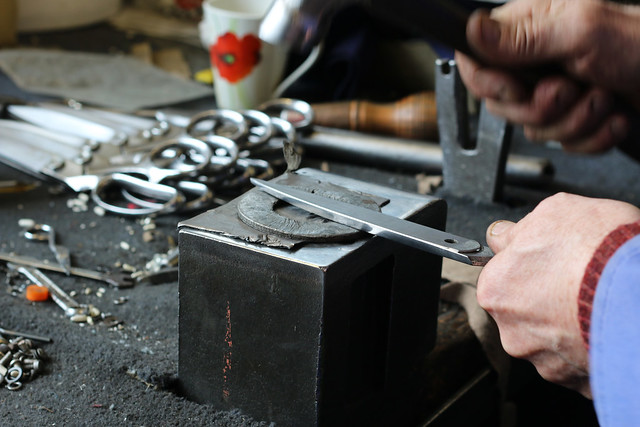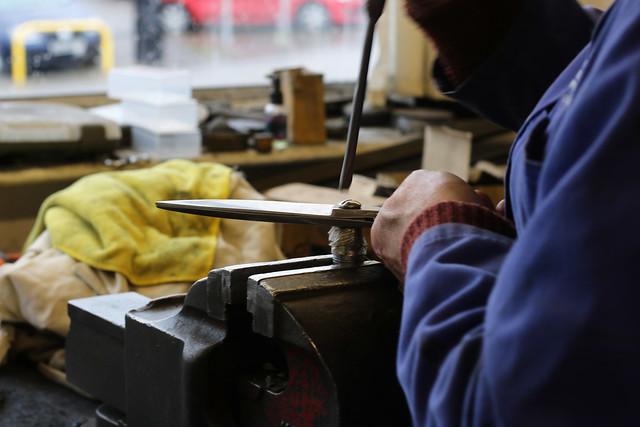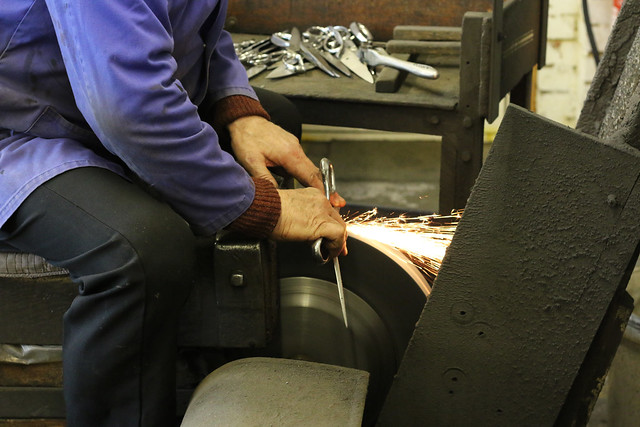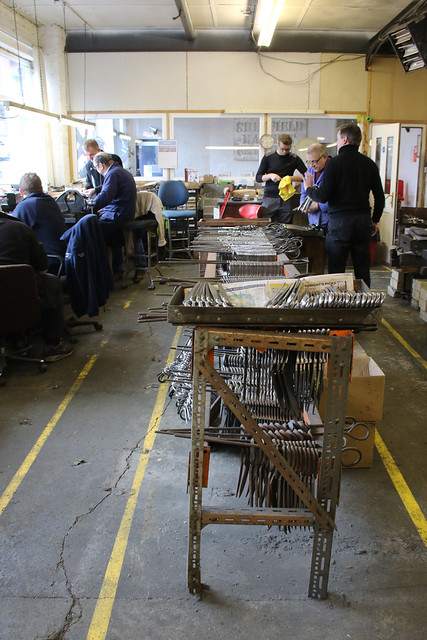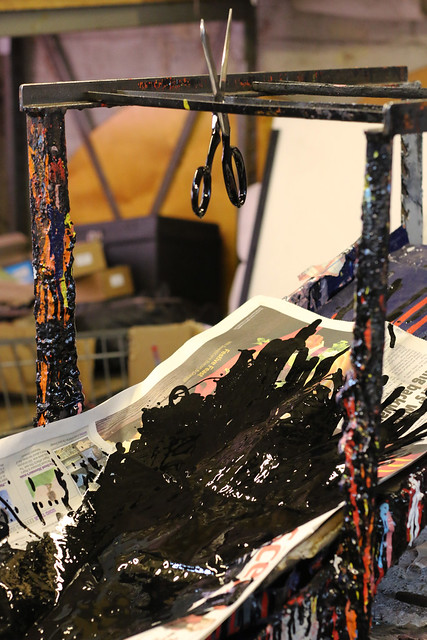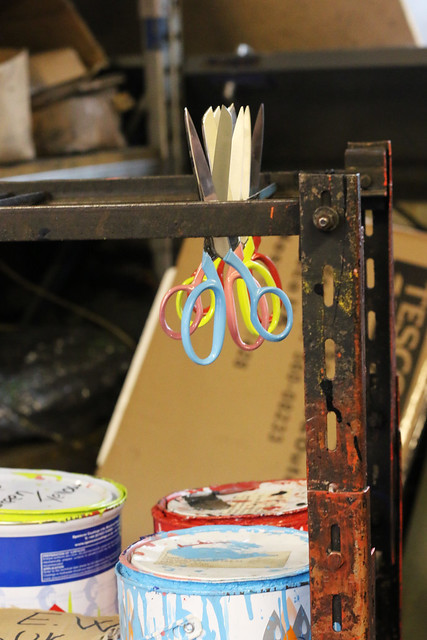The current issue of Love Sewing Magazine (issue 25, on sale now until late April) features my profile of Ernest Wright & Son. The article discusses the company and the steps involved in making their scissors (plus there’s an opportunity to win a pair of dressmaking shears), but I also wanted to talk about my visit here.
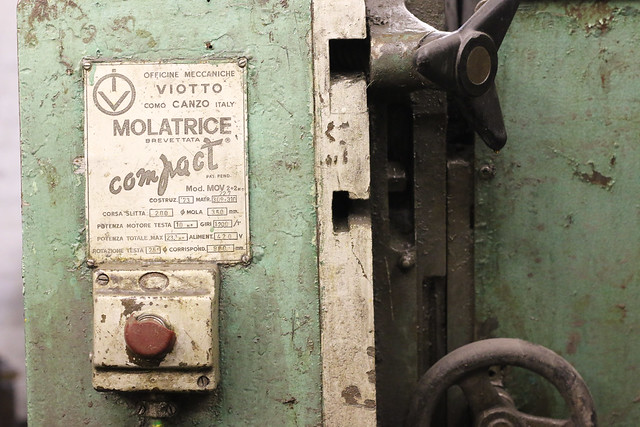
I proposed the article to Love Sewing and – having received a positive response – took a day off work and visited Ernest Wright & Son during January at their Sheffield factory.
If you’re unfamiliar with the company, they have been making scissors in Sheffield since 1902. Sewing/craft is one of the company’s specialisms (the other major one being kitchen scissors).
The factory has a small shop which is open to the public and is well worth a visit. Not only can you select a pair of their scissors in person, the shop also contains a display about the company’s history, and a window onto the factory floor where you can see the scissors being made.
Due to visiting on behalf of Love Sewing, I had the opportunity to go ‘behind the scenes’ to see the full process of making a pair of their scissors, and meet the team.
I’ve had the opportunity to visit and interview a few companies recently (mainly on behalf of Seamwork), and absolutely love getting the chance to mooch around factories and see things being made. But very few companies are as welcoming and as generous with their time as Ernest Wright & Son. I knew I was on to a winner when they made me a tea moments after I walked through the door;)
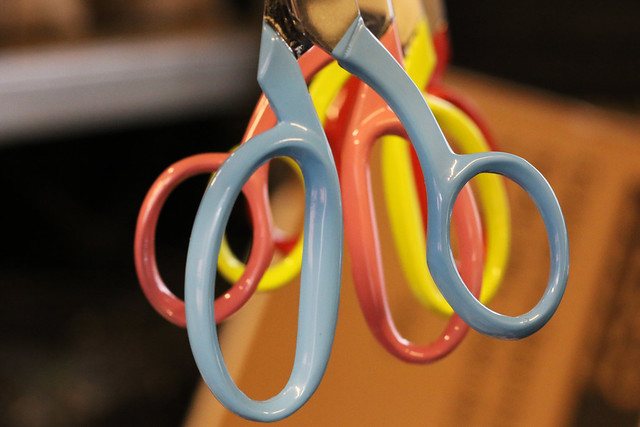
Despite the fact that I am not a journalist or photographer (my full-time job is as a project manager at a University), the team at Ernest Wright demonstrated the full process of making a pair of scissors for me – including turning on the very noisy ‘rumbler’ and dryer machines which are used to clean and dry scissors, and painting the handles of their dressmaking shears so I could photograph them hanging to dry. (P.S. if you’ve assumed from the images online that the Colours range have coloured plastic handles, they don’t, they are metal handles which are painted by hand).
I left the factory totally in love with this company and their products. Partly, of course, because of the heritage they represent, as a fifth-generation family-owned company which is one of the last remaining examples of a historically thriving industry. But most of all because of the great people who work there and their enthusiasm for the products they produce.
As a small independent business, the company face issues around cash-flow and seasonality of demand, as well as wider issues caused by the decline of the local steel industry and competition from cheaper machine-made imports. Given that their products are guaranteed for life, limited repeat business is also an issue for the firm.
If you are able to support the company (from buying their scissors, to following their social media accounts), they are a company who truly appreciate the support. And if you get a chance to visit them in Sheffield or at a craft show (they typically attend the Knitting & Stitching Show, & the Handmade Fair), do, and I suspect you’ll fall for the company too.
For more information see:
Love Sewing Magazine, issue 25
Two short films about the company: The Putter by Shaun Bloodworth, and Disappearing Art for the BBC
Ernest Wright & Son on Instagram
The factory:
Scissor painting in progress:
